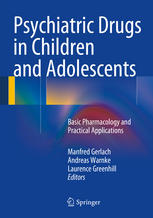

Most ebook files are in PDF format, so you can easily read them using various software such as Foxit Reader or directly on the Google Chrome browser.
Some ebook files are released by publishers in other formats such as .awz, .mobi, .epub, .fb2, etc. You may need to install specific software to read these formats on mobile/PC, such as Calibre.
Please read the tutorial at this link: https://ebookbell.com/faq
We offer FREE conversion to the popular formats you request; however, this may take some time. Therefore, right after payment, please email us, and we will try to provide the service as quickly as possible.
For some exceptional file formats or broken links (if any), please refrain from opening any disputes. Instead, email us first, and we will try to assist within a maximum of 6 hours.
EbookBell Team

0.0
0 reviewsThis book offers a comprehensive survey of the current state of knowledge in the field of neuro-psychopharmacology in childhood and adolescence. In the first part, the essentials of neuro-psychopharmacology are presented in order to provide a deeper understanding of the principles and particularities in the pharmacotherapy of children and adolescents. This part includes information on neurotransmitters and signal transduction pathways, molecular brain structures as targets for psychiatric drugs, characteristics of psychopharmacological therapy in children and adolescents, ontogenetic influences on pharmacokinetics and pharmacodynamics, and pharmacotherapy in the outpatient setting. The part on classes of psychiatric medications, which covers antidepressants, antipsychotics, anxiolytics and sedative-hypnotics, mood stabilizers, and psychostimulants and other drugs used in the treatment of attention-deficit/hyperactivity disorder, provides sufficient background material to better understand how psychoactive drugs work, and why, when, and for whom they should be used. For each drug within a class, information on its mechanisms of action, clinical pharmacology, indications, dosages, and cognate issues are reviewed. In the third part, the disorder-specific and symptom-oriented medication is described and discerningly evaluated from a practical point of view, providing physicians with precise instructions on how to proceed. Psychiatric Drugs in Children and Adolescents includes numerous tables, figures and illustrations and offers a valuable reference work for child and adolescent psychiatrists and psychotherapists, pediatricians, general practitioners, psychologists, and nursing staff, as well as teachers.